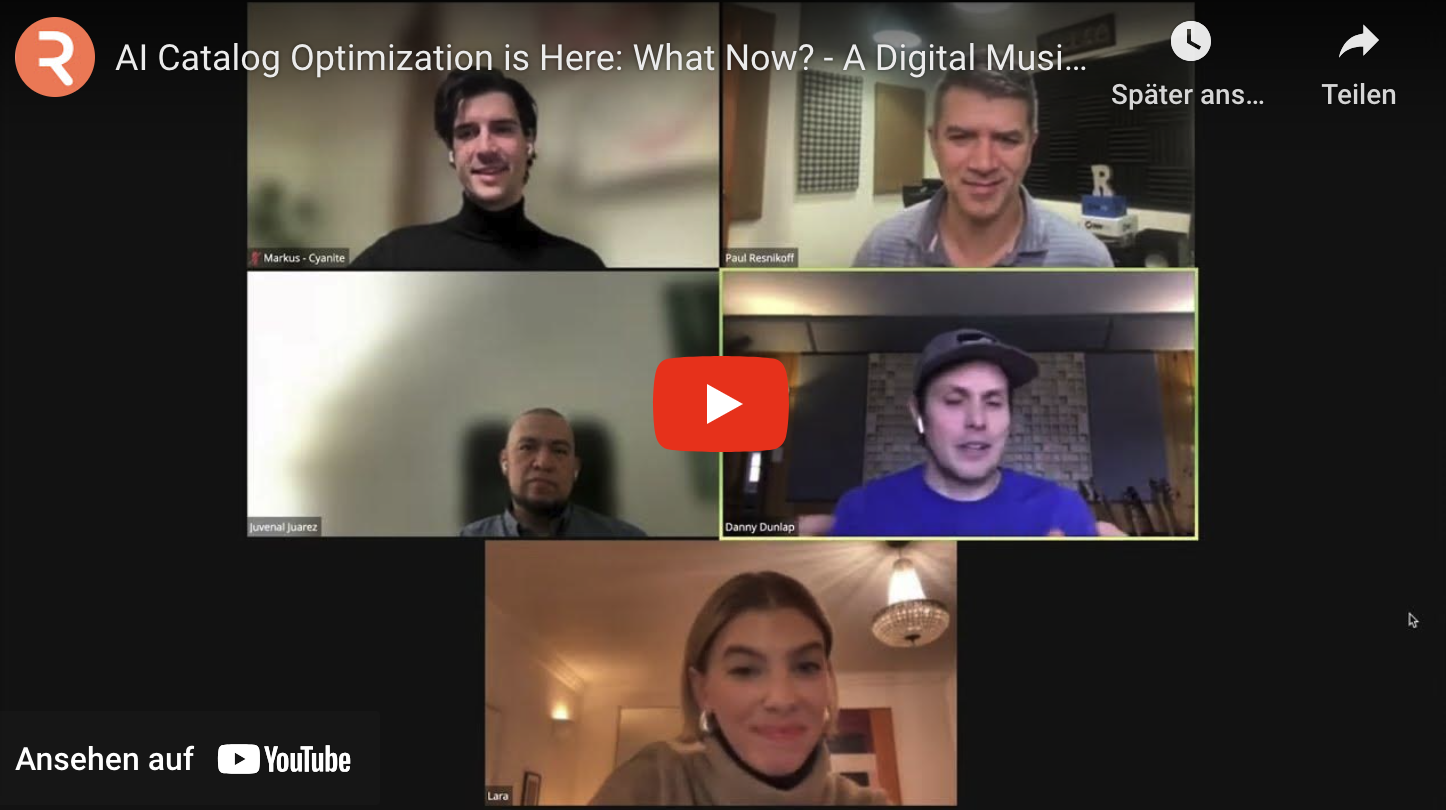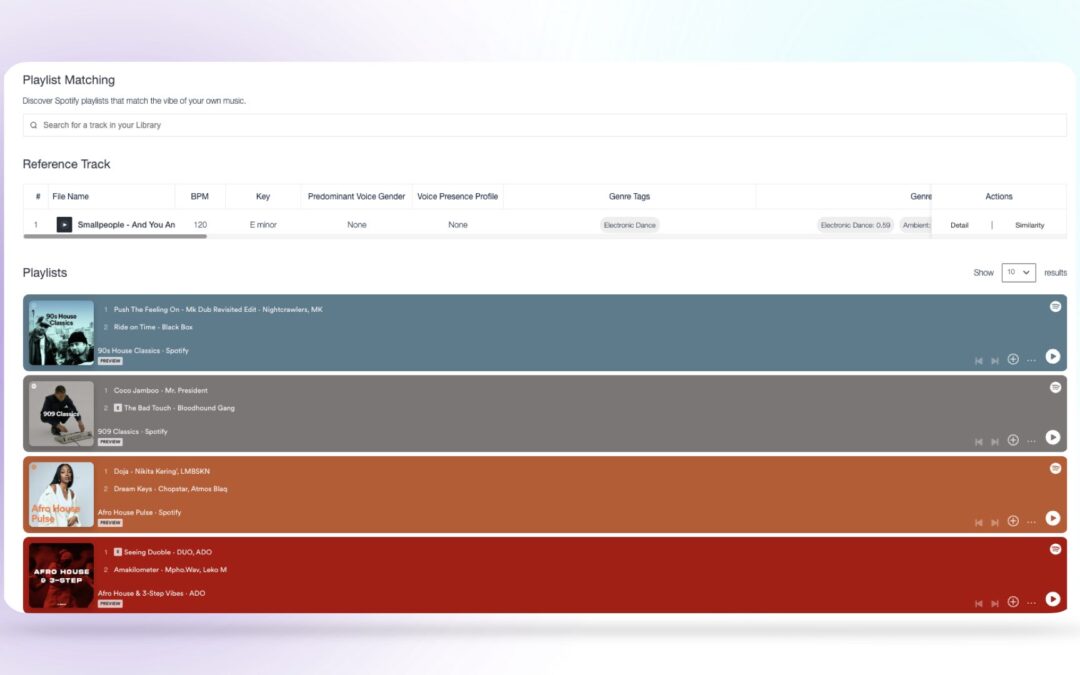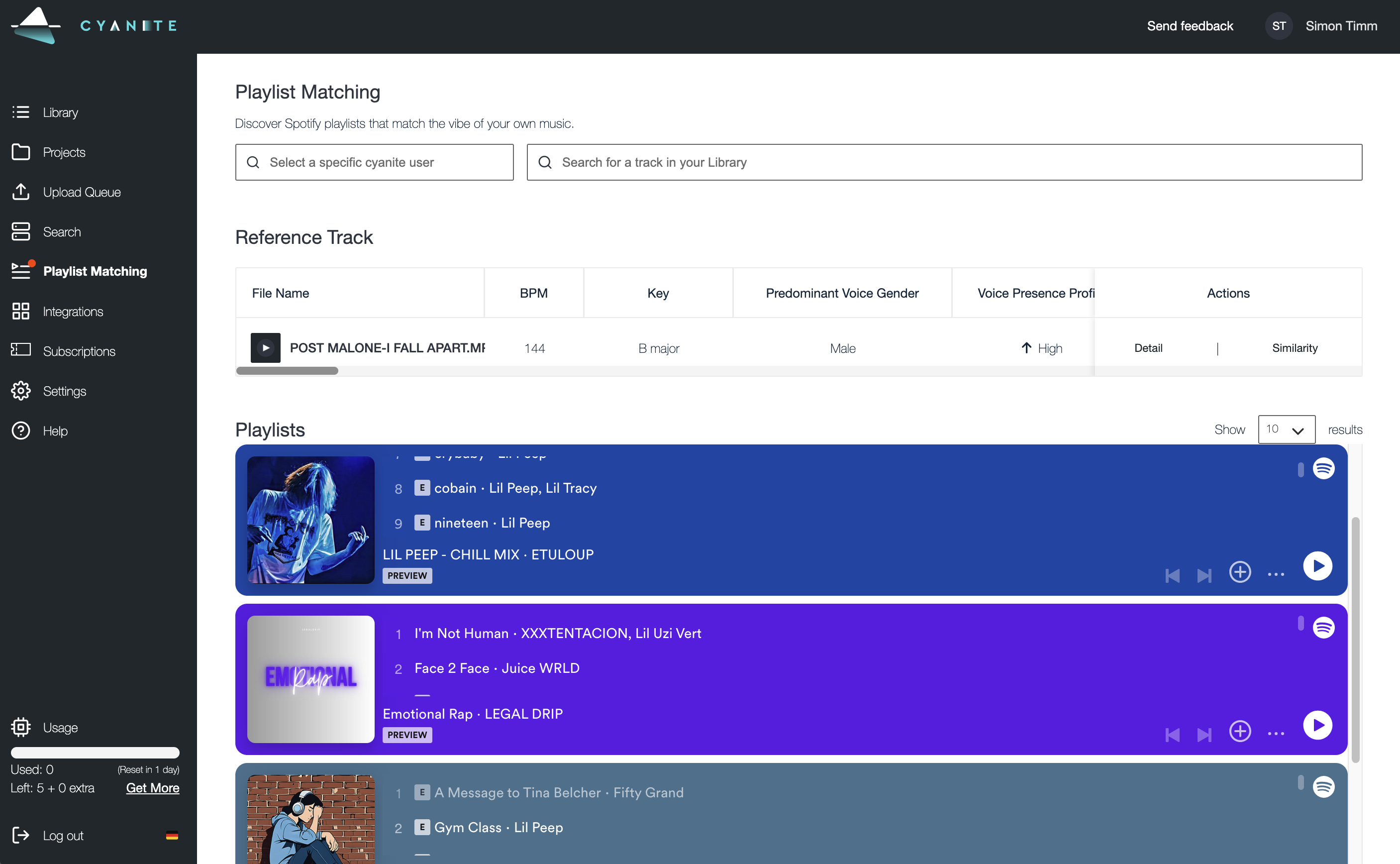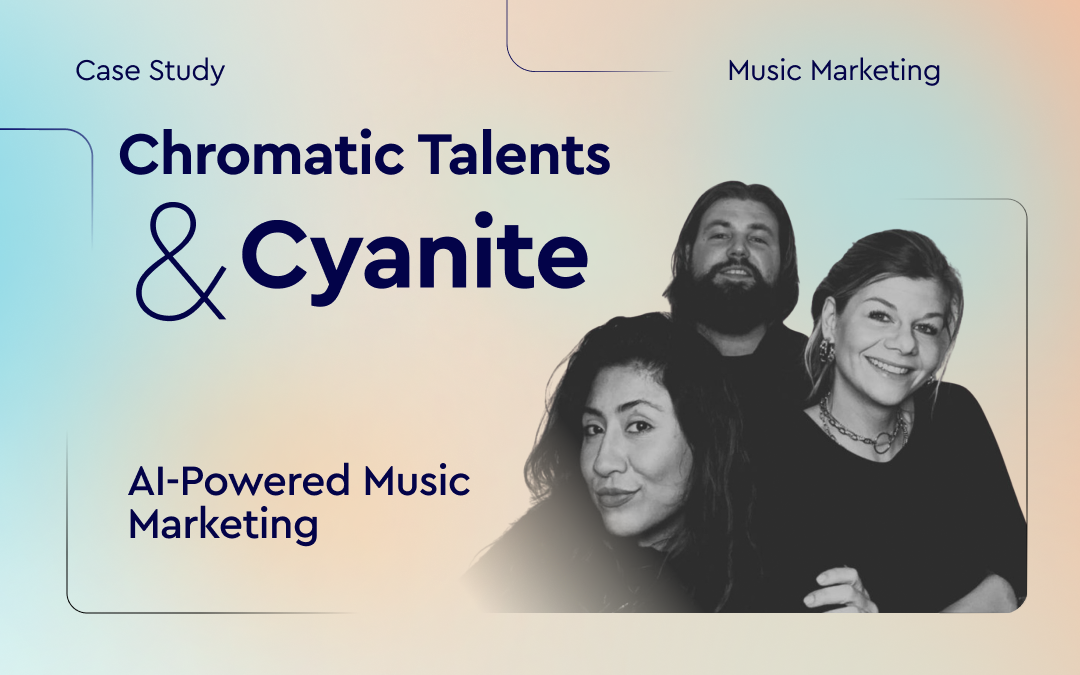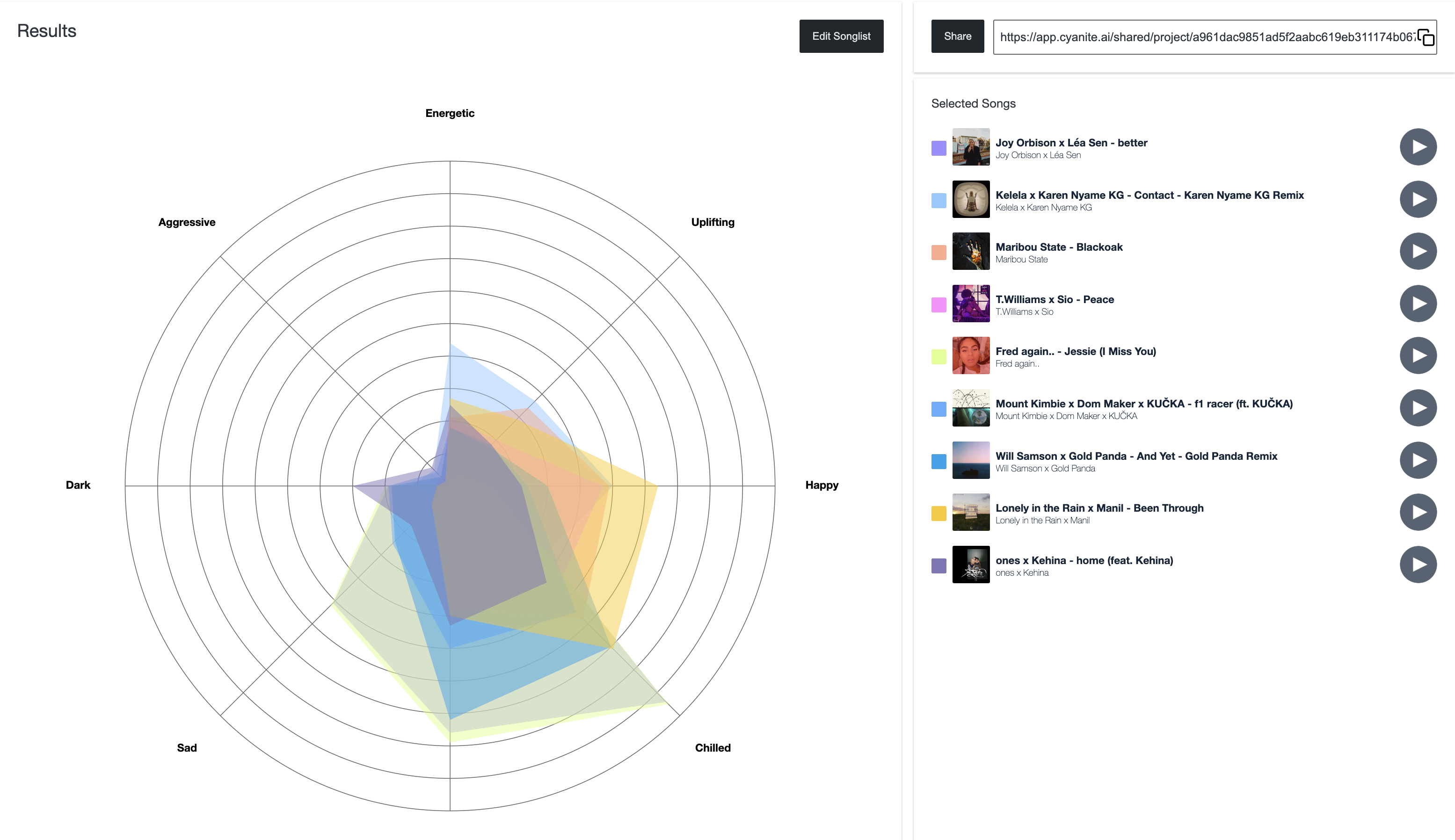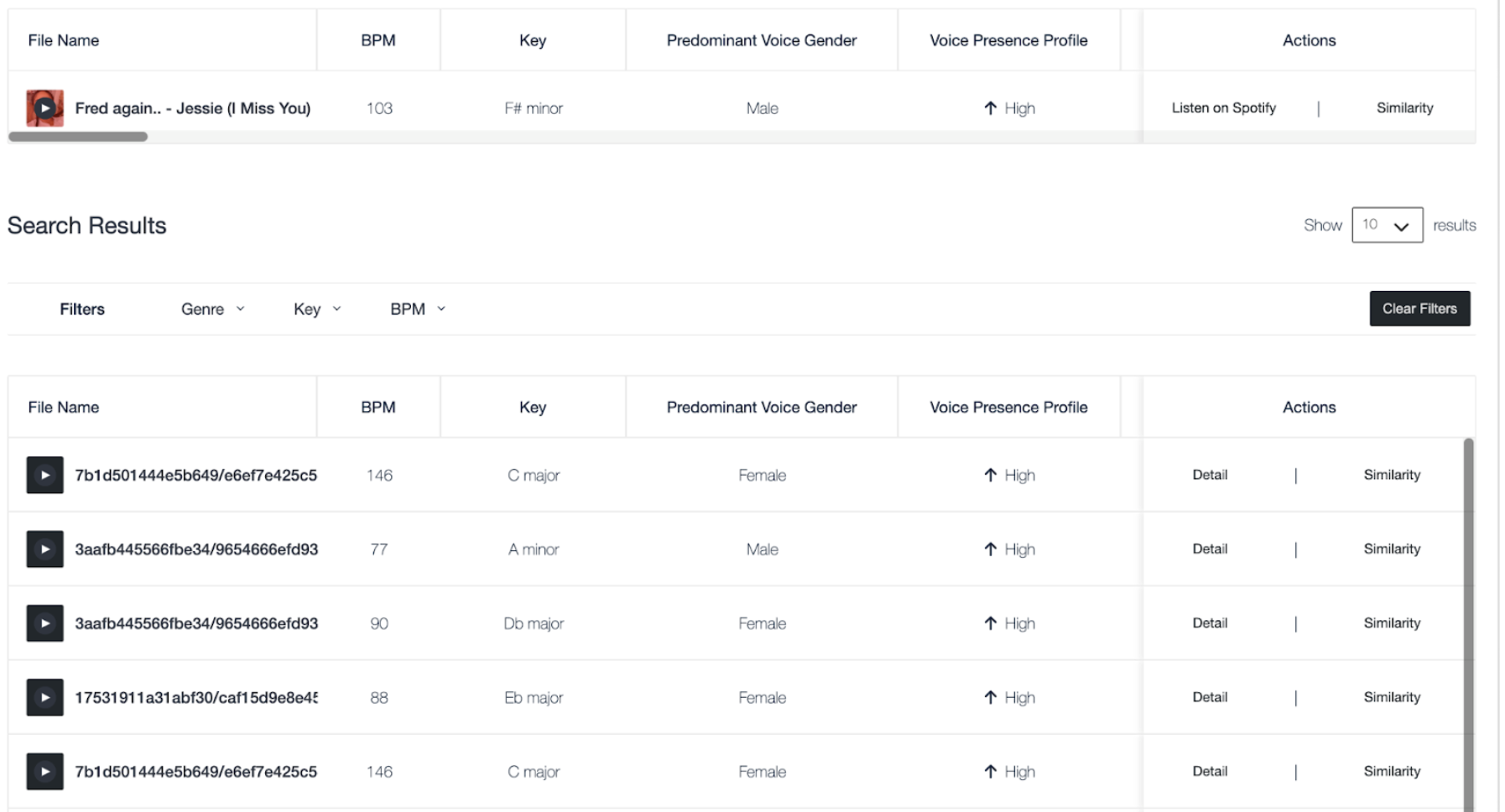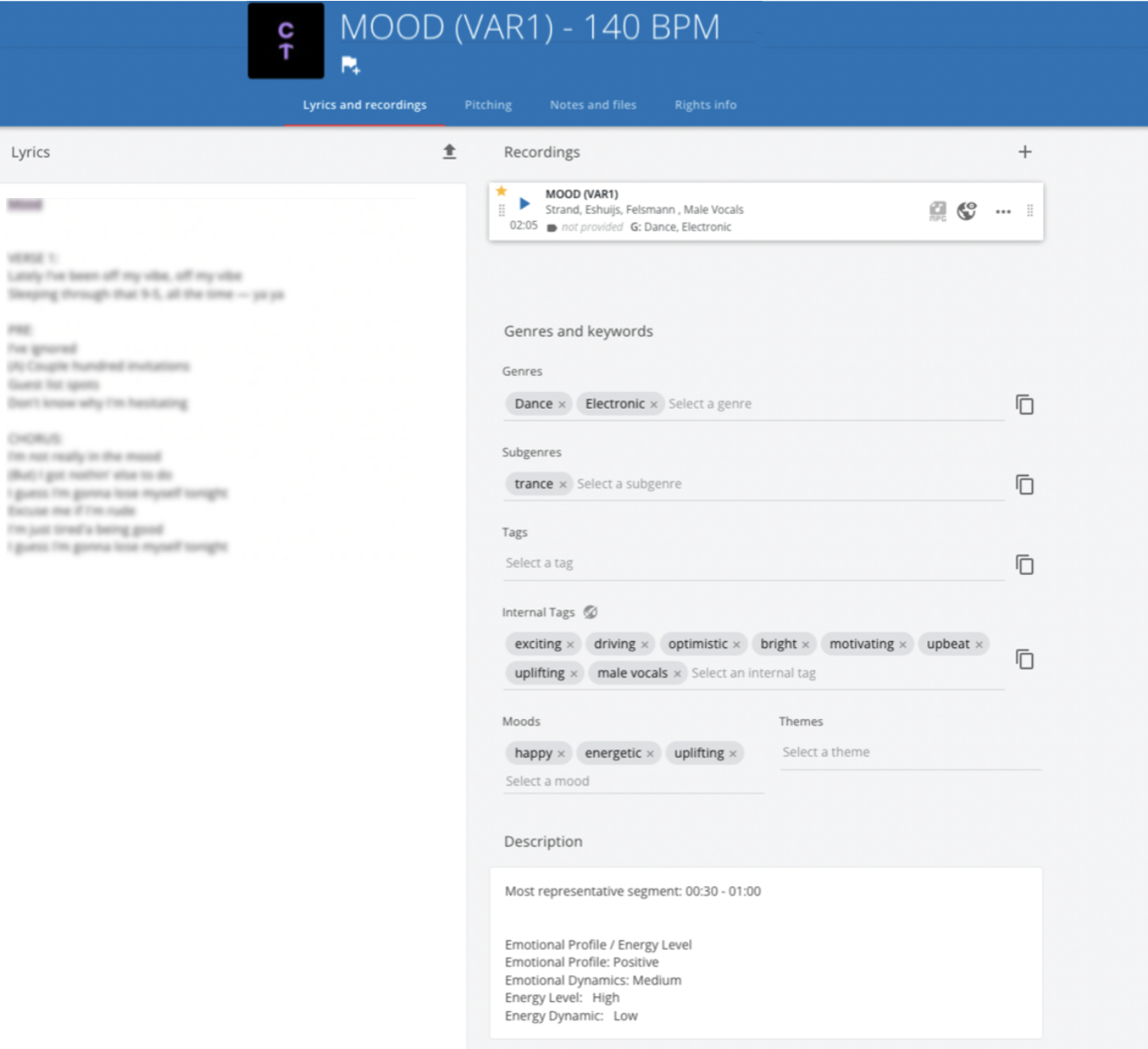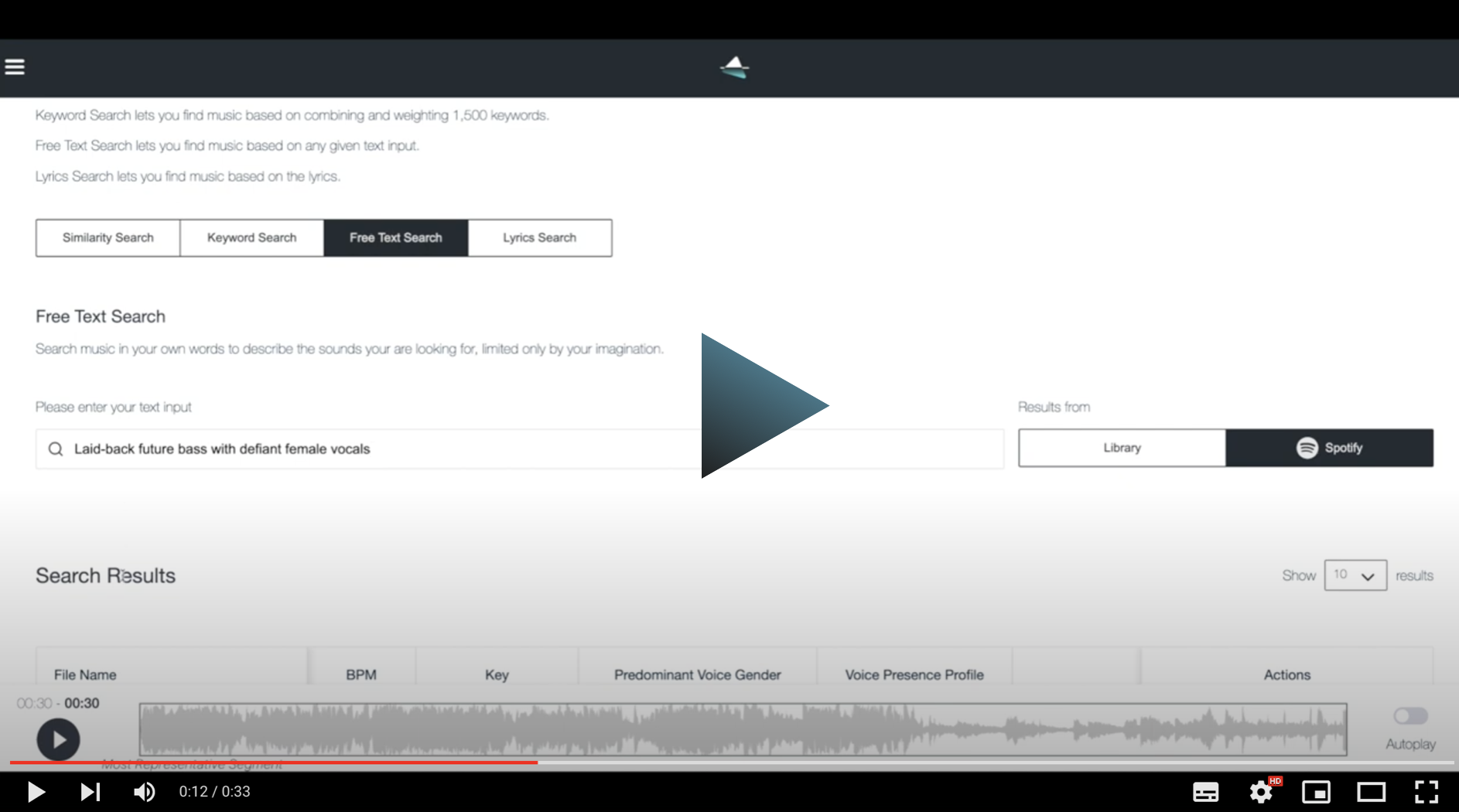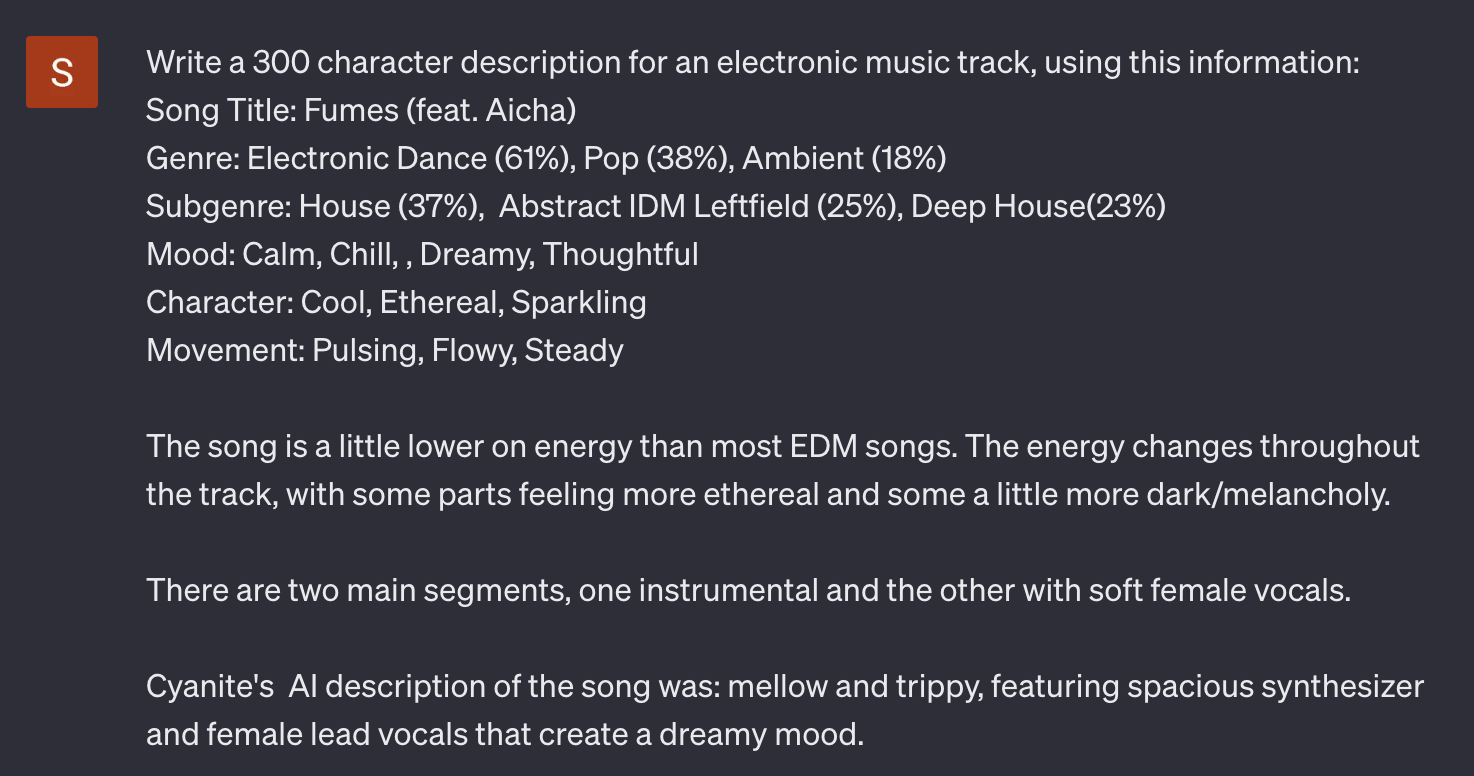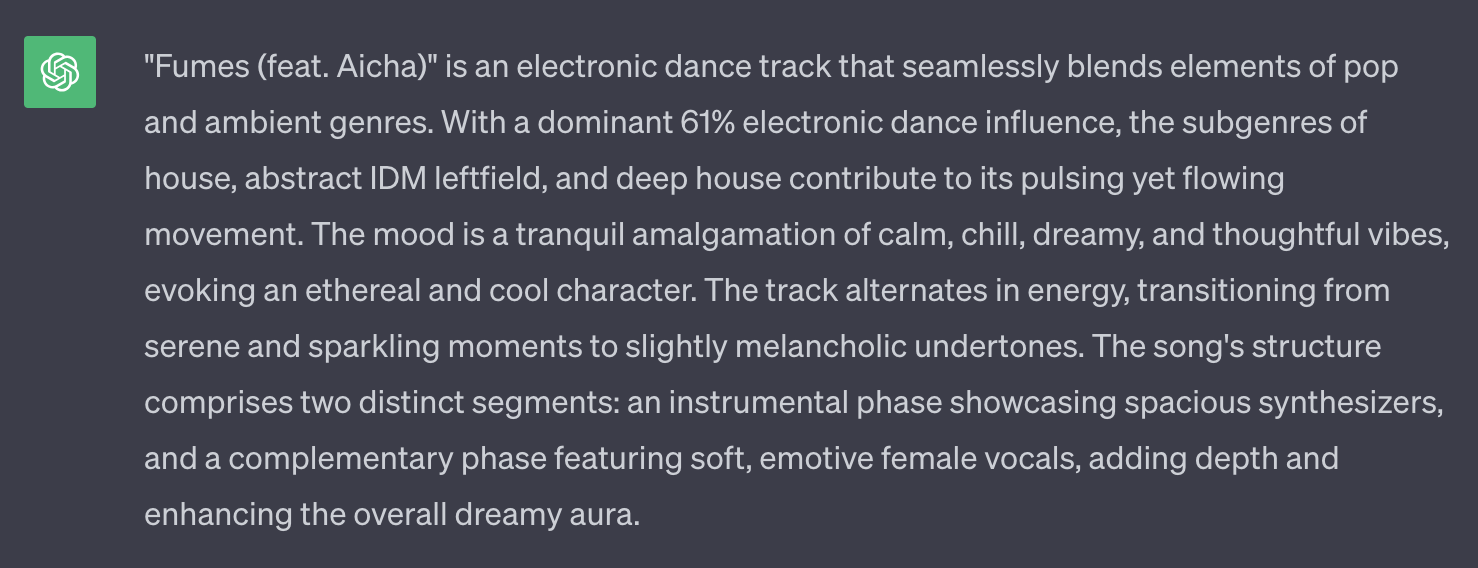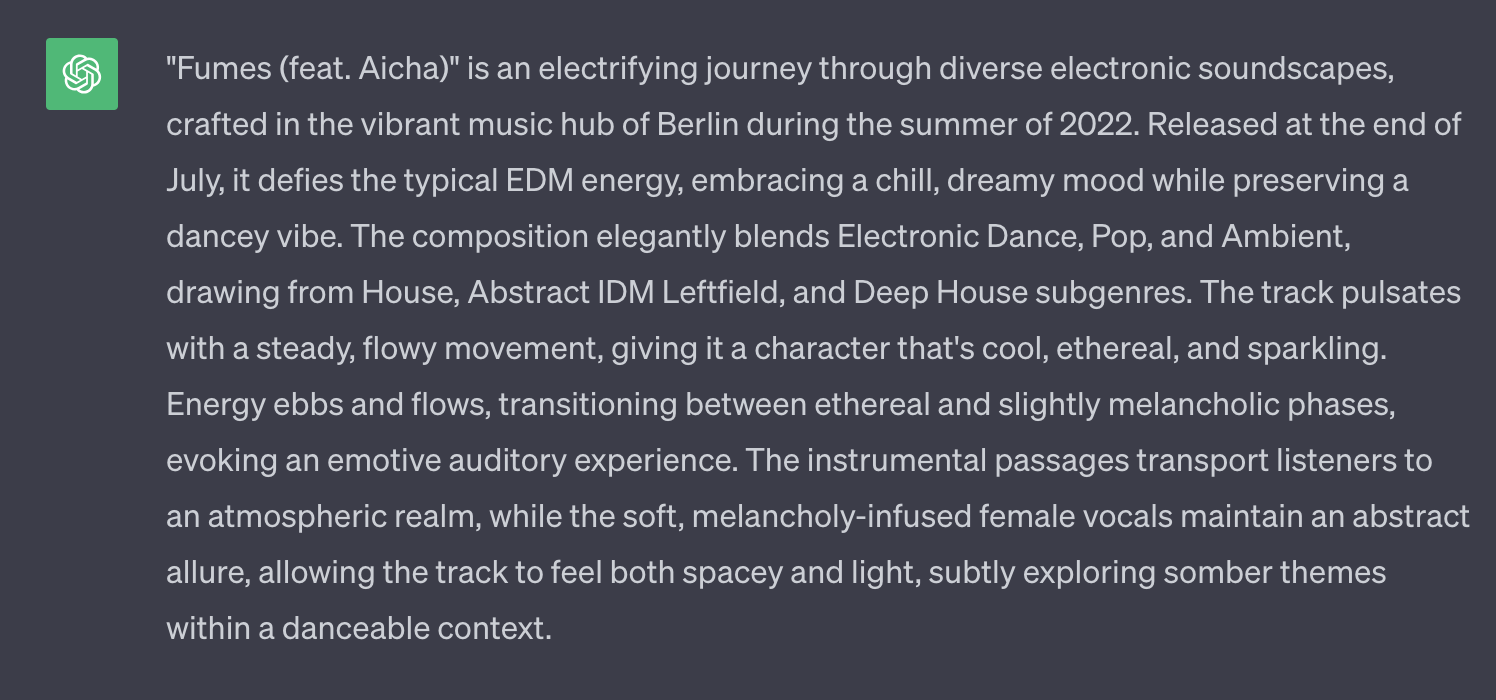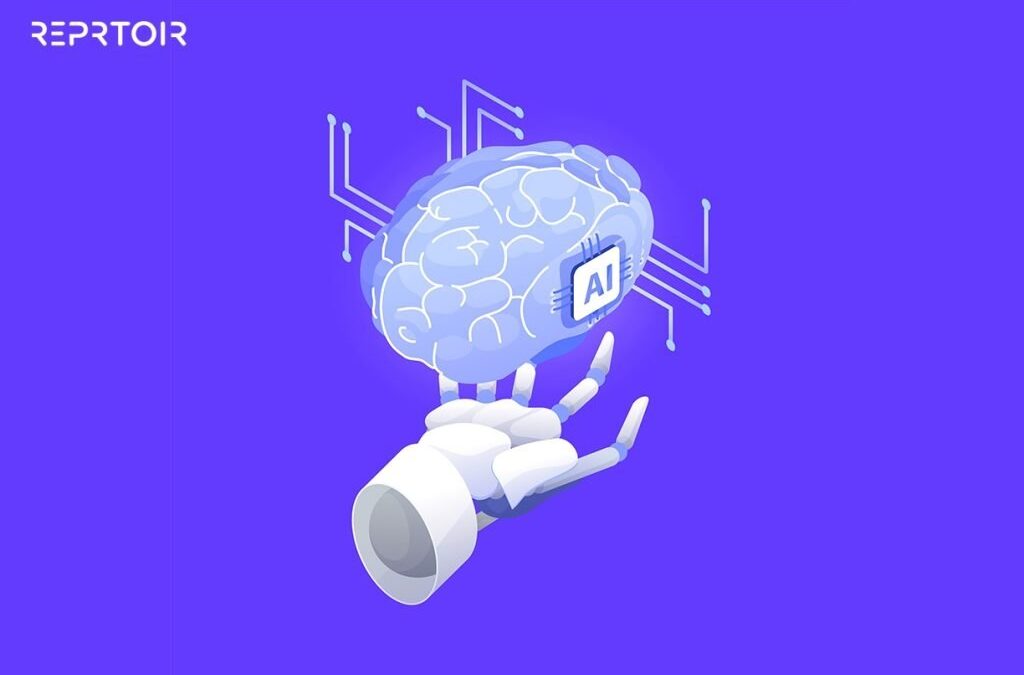
The Future Of Catalog Management: A Rep(e)rtoir Revolution
Managing Music Catalogs with Cyanite
In a recent panel discussion hosted by Digital Music News and Reprtoir, industry experts, including Cyanite’s co-founder & CEO Markus Schwarzer, discussed the challenges that music professionals encounter in effectively managing music catalogs and assets.
We summed up the most important points from the over 1-hour long panel talk for you below.
The Issue with Subjective Metadata
Juvenal Juarez from Gerencia 360 mentioned the difficulty music companies encounter in comprehensively knowing their entire catalog. This challenge is further complicated by the subjective nature of metadata tagging in music, where subjective interpretation often prevails. To tackle this, Danny Dunlap from Beacon Street Studios pointed out the advantage of leveraging AI-powered tools like Cyanite and Reprtoir to introduce a level of standardization, removing subjectivity from metadata tagging.
Shifting Power in the Industry
The incorporation of Cyanite in catalog management, as expressed by Markus from Cyanite, is transforming how professionals interact with their catalogs. The goal is to make catalog value accessible to all, not just large companies with massive resources. Lara Angelil from Reprtoir then emphasized that anyone can now harness their catalog’s potential without years of study.
Additionally, with our Free Text Search, we allow users to articulate their preferences in natural language and receive personalized recommendations. This aligns with the current demands of the industry, particularly in the realm of sync, where Cyanite helps to find the perfect track for any occasion.
A peek into the Future
Later in the panel, there was a focus on AI’s role in predicting trends and its potential impact on the discoverability of new artists. As the industry grapples with an influx of data and metadata, concerns about managing this information effectively are growing with it. Lara Angelil addressed these concerns, pointing out that scalability and the right tools, such as Reprtoir, which uses Cyanite, enable professionals to navigate the increasing volume of information and maintain transparency.
